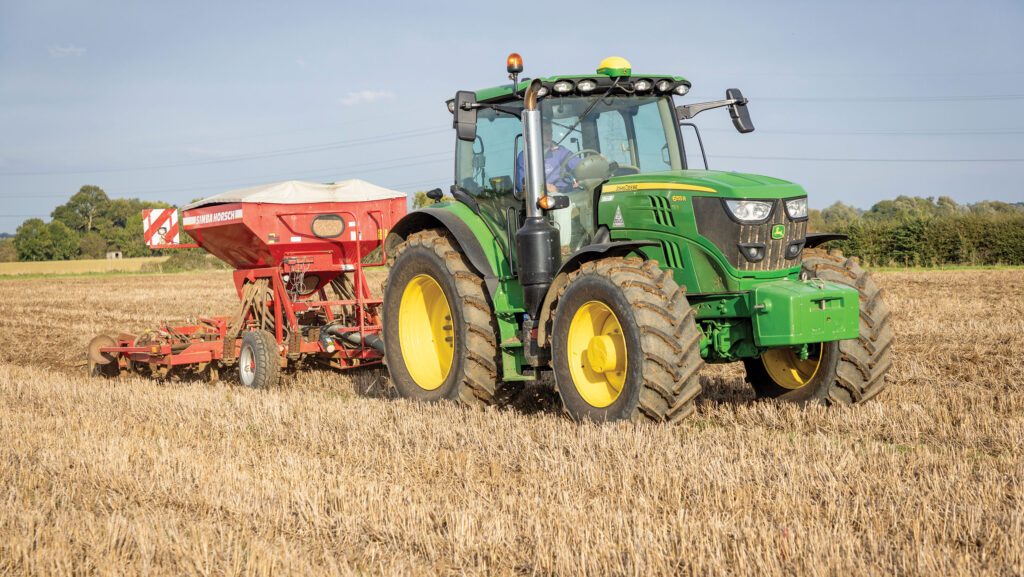Opinion: Fact, not fashion, must guide the future of farming
 © Tim Scrivener
© Tim Scrivener In farming today, it sometimes feels as though whatever the problem, whether it’s soil health, yields, carbon or profitability, the answer always lies in regenerative agriculture.
You could lose the wheel on your tractor, and someone would ask, “Have you considered no-till?” It’s become the industry’s equivalent of “try turning it off and on again”.
Amusing perhaps, but when ideological thinking takes such an evangelical grip, profitability risks being thrown under the tractor.
See also: Opinion: How farming’s past is shaping a resilient future
About the author

Richard Williamson was a director of farming company Velcourt for 27 years before serving as managing director of Dyson Farming for seven years.
I am not opposed to regenerative practices. Far from it.
With more than four decades in large-scale agriculture, I have introduced many regenerative techniques across substantial areas of operation, and I saw the benefits such implementation did and did not deliver.
But crucially, these techniques were applied as part of a wider farm strategy, not as a “one-size-fits-all” policy.
This distinction matters because at the core of every decision we made was commercial reality.
We trialled new approaches, measured the results, and adopted those that improved both environmental outcomes and the bottom line.
Some ideas worked brilliantly. Others looked persuasive in theory, but proved impossible to justify in practice. Such is the nature of farming innovation.
The debate
There is also the question of who sets the tone for the debate.
Most farmers are too busy farming to spend time promoting their practices on platforms and panels, and too broke to pay others to do it for them.
Meanwhile, a small group of articulate, entrepreneurial advocates dominate the conversation and social media.
Their views are not necessarily wrong, but they should not be mistaken for the voice of the majority.
Farming has always been a blend of tradition, science and pragmatism.
Regenerative practices undoubtedly deserve a place in that mix, but they must be judged in the same way as any other farming practice: on their results in both environmental and financial terms.
Cover crops, reduced tillage and integrated livestock all have potential benefits, but their adoption should be guided by their contribution to sustainable profits.
Concerns
So, my concern is not about regenerative farming practices per se; it is about these practices being hijacked by big corporations and hungry start-ups without farming intel or scientific rigour.
The regenerative movement has gathered strong political and media momentum.
It is a marketeer’s dream, spilling over with trending hashtags: #climatesmartagriculture, #soilrevolution, #sustainable and #waterretention.
Public interest in soil health and biodiversity is no bad thing.
But when regenerative farming is put forward as the answer to it all, the risk is farms that will be judged by labels rather than results and by hashtags rather than healthy outcomes.
Profitability
Making money is not an added bonus for farmers, the majority of whom do not have secondary income streams to fall back on; it is the oxygen that keeps every aspect of farming alive.
The way forward is not to reject regenerative farming, but to reclaim it from the evangelical grasp of the ideological and put it back in the knowledgeable hands of farmers and the farming industry so they can embed it in achievable, evidence-led, profit-driven decision-making.
That means trialling, measuring, adapting and being willing to say “that didn’t work” without fear of being targeted as “anti-environment”.
Ultimately, the business of farming is producing food profitably and sustainably for a burgeoning population.
We should be open to new ideas, but never beholden to them.
A profitable farm is far better placed to invest in environmental improvements than one operating on thin or negative margins. If we lose sight of that, we are on shaky ground.
